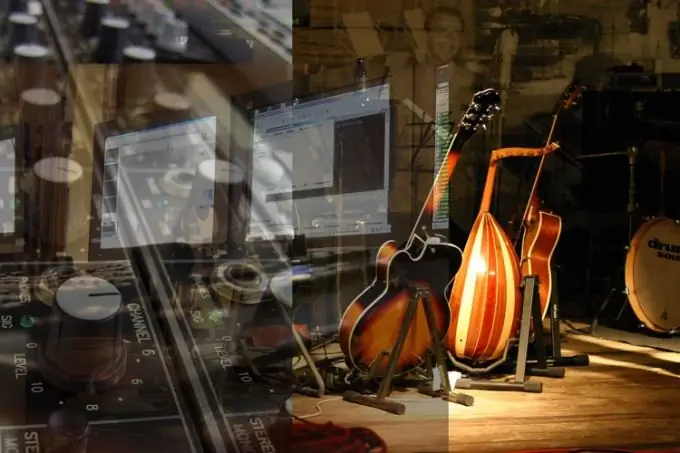The task of rebuilding the sound arises in the concert practice of a sound engineer and sound engineer. And, if, for example, at a hospital (that is, on your own stage), the sound is rebuilt once, and then it is only corrected, then on tour every time you have to rebuild again. Everything, of course, depends on the audience, but for such cases there is a fairly stable algorithm - “one-two-three-four”.

Instructions
Step 1
Checking the availability of equipment available in the sound department of this hall - "time". Check the list for the required equipment: mixer, microphones, commutation, preamplifiers, output amplifiers, acoustic systems (portal, satellites, subwoofer), equalizer, effects processor, compressor / limiter, MD-CD player (or computer with output).
Step 2
Together with the local sound engineer, decide whether you are working from a “local” console (mixer), or from your own, or from your own through a local one, depending on the commutation installed on the stage - this is “two”. As a rule, few take the output amplifiers and loudspeakers with them on the road; if you are one of these few, then the general rule is as follows: acoustics and microphones - only our own (if not enough - we supplement with local ones). In this case, you work from your remote control. Also, from your own - but giving out sound through the local one - you work in the case of specific conditions (for example, we have a digital console with a set of complex presets). In all other cases, it is better to work through a local console, supplementing the set of available processors with your own, if necessary.
Step 3
Place microphones, instruments on the stage, connect cords, connect - these are "three". Check if everything works.
Step 4
The actual tuning, or "sound check", occurs immediately before the performance - "four". Your goal is maximum audio intelligibility at optimum density. First, set the overall acoustic picture: set the sound levels, panning, reverb. The soloist, if he is alone, place in the center of the panorama, if there are several, spread it to the right and to the left. The stereo base of the accompaniment (if any) is generally exposed no more than 70 degrees, if there are no soloists, then up to 90-100. Check the overall reverberation on the loudest sound - there should be a neat echo that does not destroy intelligibility. Determine the dynamic range (the difference between the loudest and the quietest sound), depending on this, set the compression. After that, you are left with subtle, "artistic" settings. Equalize the brightest tones of the soloist's voice and instruments. You can carefully add reverberation to individual channels, double-check the overall picture with the loudest and quietest sound. Check the audibility in monitors: with the soloist separately, accompaniment separately, for all together. Set the exact levels and effects you want. Ask the musicians if everything sounds good. If so, declare “done” and mute all working channels on the console. From that moment on, the equipment is not disconnected from the network until the end of the concert. When the artists step on stage and pick up their instruments, at the right time the mute is removed and the concert begins.






